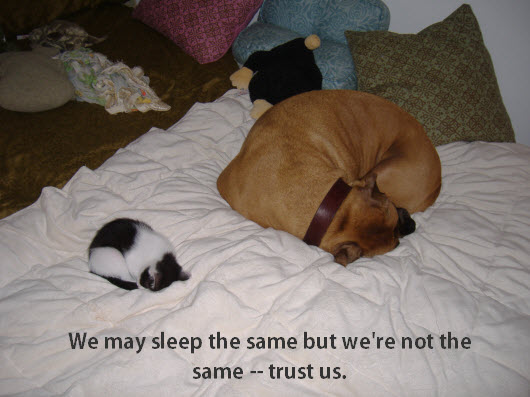10 Ways SEO Has Changed Over the Last 10 Years
 To be honest, I wasn’t sure how to approach this subject. After all, SEO has changed so much over the past ten years that simply mentioning ten ways it has changed would hardly do it justice. Still, jumping back to 2003 just after the new year does seem appropriate. So, here are my somewhat random thoughts on the ways that SEO has changed over the past ten years:
To be honest, I wasn’t sure how to approach this subject. After all, SEO has changed so much over the past ten years that simply mentioning ten ways it has changed would hardly do it justice. Still, jumping back to 2003 just after the new year does seem appropriate. So, here are my somewhat random thoughts on the ways that SEO has changed over the past ten years:
Yahoo Was about to be Dethroned
Back in 2003, it still was not all that clear that Google would become the absolute king and that Yahoo would be dethroned. Certainly there were hints that this would take place as Google became wildly popular back then. However, in 2003, most of us still thought of Yahoo as the quintessential Internet company and Google as a scrappy startup.
Oh and back then, Bing didn’t exist. If I recall correctly, Microsoft was still running the MSN Network and they were pushing MSN search (again, my recollection of when that died is a bit fuzzy but I’m pretty sure that they were still doing it back then). Either way, Yahoo was still the king.
Oh and let’s not forget AOL. They were already in decline by 2003 but they were still a major force in the Internet world with stories written about them all the time and those ubiquitous CD-ROMs given away pretty much everywhere. However, in spite of AOL being big, Yahoo was still the big cheese in search engines.
Black Hat SEO Was In Its Infancy
Here’s another thing which we haven’t thought about for years: black hat SEO the way it used to be practiced. Back then, SEO was still pretty easy to do if you wanted to cheat. The whole keyword stuffing your meta data thing went out around the turn of the millennium but you could still keyword stuff your content.
This was also the time when made for adsense sites were just starting to get off the ground with a handful of entrepreneurs deciding to try their luck. They made good money from such sites which usually had junky, keyword laden content because it was relatively easy to game Google, Yahoo and the other search engines.
Of course, some other oldies but goodies were the efforts to hide keywords in code or to use dark backgrounds with dark text for keywords while displaying normal stuff for your customers.
This was also a time when the whole idea of using viruses to create thousands of bots to spam the Internet was barely a glint in anyone’s eyes. Back then, viruses were still mostly the sort of thing that people used for mischief.
LSI? What’s That?
Latent Semantic Indexing was another thing most of us hadn’t heard of 10 years ago. These days of course it’s old hat. The idea of LSI is in essence that you didn’t just want to use your main keyword over and over again. Using related keywords which would make Google and other search engines really like your content more was just starting to take off as a method of doing SEO.
Today of course, Google does that automatically – try doing a search for a popular keyword and Google will actually find and highlight for you synonyms of that keyword. It’s pretty cool. It also finds some answers for you instead of just showing you pages which may contain the content that you are interested in reading (for example, try to Google “how tall is the Empire State Building.”).
Google Bowling Didn’t Exist Yet
Google bowling showed up around 2005 or so when Google started to penalize websites which had lots of junky backlinks. The idea was that people were creating backlinks on all sorts of sites, including thinks like link farms – sites which existed for no purpose other than to provide backlinks to other websites. Google’s algorithm addressed this issue by devaluing sites using such junk links.
The result of course was a particularly insidious form of black hat SEO which in some ways is still with us today – Google bowling. The idea was that if you couldn’t get your own site ranked highly enough, you would simply trash the rankings of your competition in order to shine by comparison. This worked for a while until Google changed their algorithms and began ignoring the junk backlinks.
Of course, back in 2003, nobody had heard of Google bowling because link farms were all the rage then. We knew then that we needed to build plenty of backlinks to our websites in order to rank well on Google and even on Yahoo and MSN Search. So, we gave the search engines what they wanted – lots and lots of backlinks.
Today of course, Google bowling is back thanks to the Penguin update. I do suggest folks check out the Google Disavow tool if they want to try to avoid the penalties involved in this though.
Blog Commenting Was Just Becoming Popular
Another thing that’s vastly different now as opposed to then is that blog commenting was just starting to become popular back then. In 2003, it was still really hip to have a blog of your own. People thought you were somebody if you were spilling your guts about whatever it was that you had on your mind for the whole world to see and comment on.
The idea of making money from blogging was just starting to come into play without all the sophistication that modern blogs use to try to grab eyeballs and advertising dollars. Commenting on blogs was also considered to be a really good way to grab plenty of quality backlinks – after all, you could leave a backlink and it would almost inevitably be a do follow link.
Blogs were also starting to become mainstream at this time because they were becoming important sources of breaking stories. This was the beginning of the end for the newspaper industry and as such, we found that we could take very good advantage of blogs for our SEO purposes back then.
Today of course, blog commenting is still useful but anyone who thinks that blog commenting is the only way to get backlinks or even the primary way to do so is well, stuck in 2003.
MySpace Was Popular
Remember MySpace? It was actually not the very first of the social networks. I know for sure that Friendster came before MySpace. This was the social network du jure though and it was wildly popular. Everyone seemed to be on MySpace though it was especially the kids – MySpace had a huge following with the tweens and teens (which unfortunately also made it popular with internet predators).
Back in 2003, Facebook was nothing but a glint in the eye of Mark Zuckerberg, who didn’t even launch the site for another year. And yes, people were already building a social presence for the purpose of doing SEO back then. MySpace did have backlinks though I don’t recall it being nearly as popular for that purpose as Facebook is today.
Friendster was around too by the way though I don’t recall it ever really catching on the way MySpace did. It was launched back in 2002 while MySpace launched in 2003 (technically by the way, it hasn’t been quite 10 years since MySpace was launched – it came out mid 2003).
Remember Delicious?
Speaking of sites which have lost their luster but are still with us (I checked and according to Wikipedia, MySpace still gets a respectable 25 million hits per year), Delicious was launched in 2003 and became the first widespread social bookmarking site. It was designed to allow people to share websites they’d found which they thought were cool.
Unlike MySpace and Friendster, Delicious was designed to allow for something short and sweet. Think Twitter but without the very strict 140 character limit. The site quickly became a darling of SEO experts as a place to build up a quality portfolio of backlinks and to get sites to number one on the Google SERPs.
Oh and by the way, in case you were wondering, DIgg didn’t show up for another year. Still, this was the very beginning of the social bookmarking craze which is still with us to this day.
Video Was Not an Issue
I still remember the first time I saw online video. It was a jittery, postcard sized box with a live stream of Fox News and I thought it was the absolute coolest thing I’d ever seen. That was back in 1999. Hulu didn’t exist of course and Netflix was still mailing DVDs all over the country. Even YouTube hadn’t come on the scene yet (it would show up two years later).
Still, it is important to consider the idea of viral video and its use in SEO. Today, we know that viral videos are incredibly important if you want to create a quality SEO campaign. Even the famous Numa Numa video hadn’t yet been put out back in 2003.
Oh and by the way, speaking of that video, it is also a lesson in unintended consequences. The guy who created it did an interview a while back where he said that he kind of wished he’d never done it since he didn’t like the notoriety that came from the thing.
However, even then early pioneers knew that video could become wildly popular and would make for websites which would totally dominate in the SEO sphere. I remember hand coding a website back then for a company I worked for. I included streaming audio and video for them which was absolutely revolutionary at the time since it was still such a curiosity.
Bum Marketing
My memory may be faulty but I think the idea of bum marketing existed back in 2003 though it was just starting to become popular. If not then then soon after it became popular. Today of course, it’s basically a dead method making money online and of doing SEO (though amazingly, I still see people trying to peddle this as a way to do SEO – go figure).
The idea of bum marketing was to blast an article to the four corners of the earth by posting it everywhere and anywhere you could, especially on article directory websites which would allow you to publish whatever you liked and include a backlink to your own site. This would create thousands of backlinks for your site.
As the concept progressed, the so called article spinners were introduced – these programs will take your article and turn it into unreadable gobbledygook. However, the idea was to spread these poorly spun articles everywhere and try to use them to gain backlinks to your website. It worked for a while and people made six figure incomes doing it.
Today, with the Panda update in place, Bum marketing is largely a discredited method of doing SEO work but as I said, some people still peddle it.
Duplicate Content Wasn’t Much of an Issue
 Finally, back in 2003, duplicate content wasn’t much of an issue either. The whole idea that you might want your content to look unique didn’t matter so much as long as you spread it far and wide. The search engines hadn’t been optimized yet to weed out the duplicate content on your website. Nor did they try to weed out sites which basically created clones of other websites.
Finally, back in 2003, duplicate content wasn’t much of an issue either. The whole idea that you might want your content to look unique didn’t matter so much as long as you spread it far and wide. The search engines hadn’t been optimized yet to weed out the duplicate content on your website. Nor did they try to weed out sites which basically created clones of other websites.
Of course, once the whole duplicate content issue became a big deal, the spinners came out and the Internet was awash in crap which nobody could read but which at least got us plenty of backlinks.
Bottom Line
Things have changed quite a bit in the past decade. New technologies have come out and the mobile Internet is now something which we take for granted (who would have thought you need to optimize for mobile sites back then? I had a few WAP sites on my phone but that was about it). What will the next ten years bring to the world of SEO? Who knows? I’d love to hear your thoughts though. Share them below.

